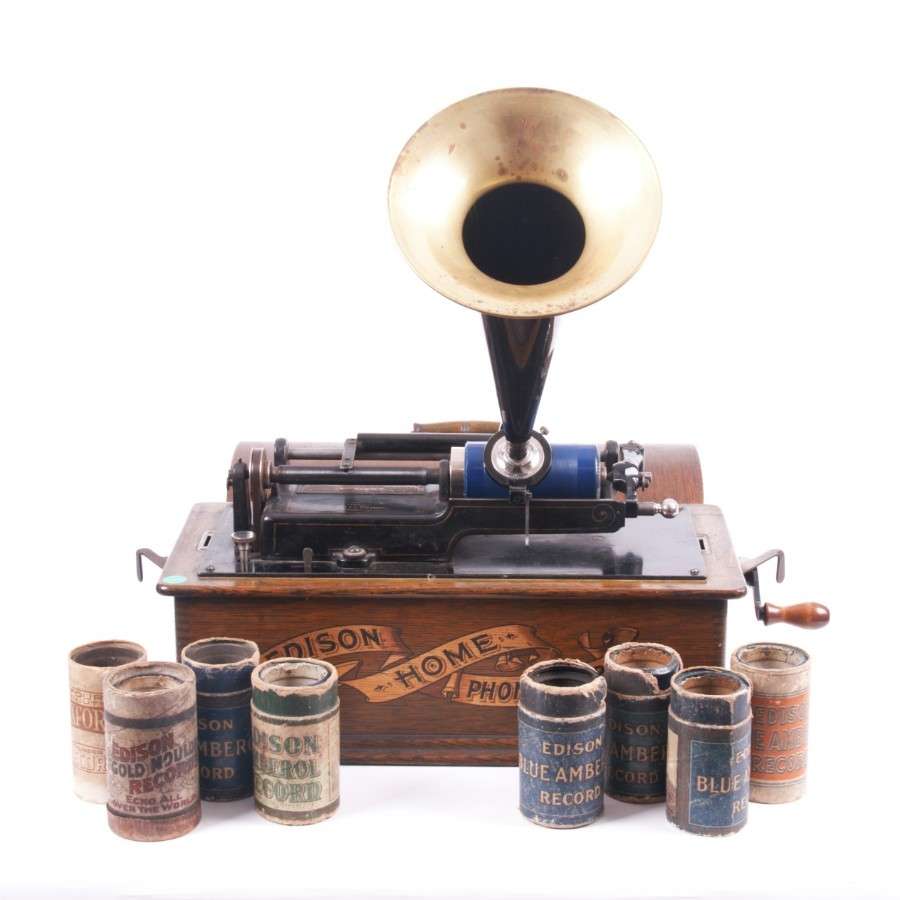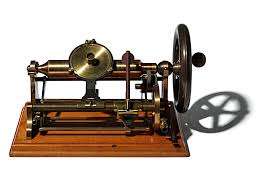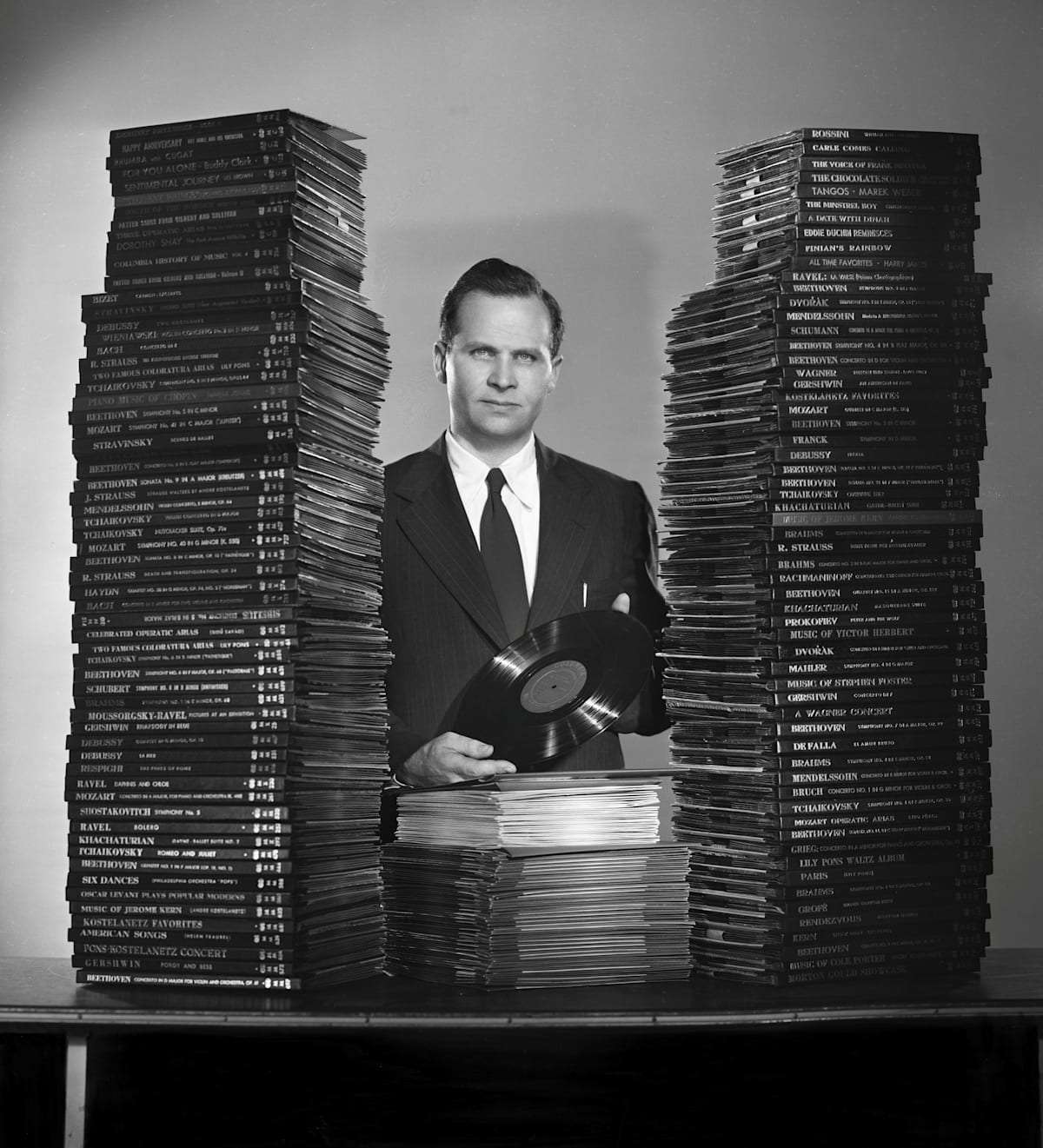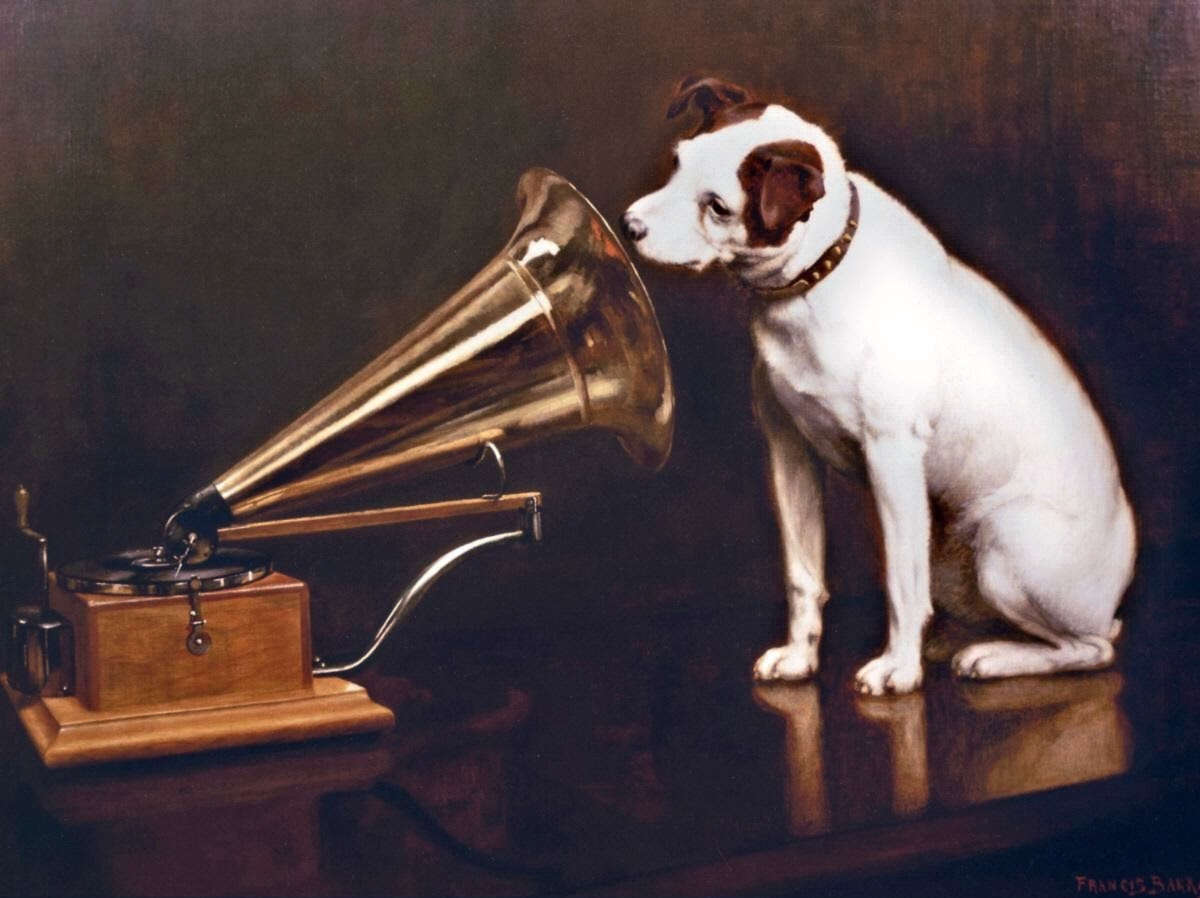Grooves Through Time:
A History of the Record
Before the digital age, when playlists, streaming, and the idea of downloadable music were but a distant fantasy, music was a physical thing, etched into surfaces, spun into life, and played through polished horns.
Across a four-part series, we’ll be delving into the rich history of the record. So,
whether you’re a seasoned collector or a curious newcomer, settle in as this series
guides you through the evolution of formats and materials, explores the cultural
breakthroughs that shaped how we listen to music, and finally, offers a look into the sustainable future of vinyl in an eco-conscious world.
In Part 1, we begin with the key pioneers and patents that gave rise to recorded
sound, laying the groundwork for the record as we know it today. From Edison’s
fragile tinfoil cylinders to the smooth spin of the LP, the story behind the record is a
sweet symphony of innovation, characterised by genius, rivalry, and revolution.
Across a four-part series, we’ll be delving into the rich history of the record. So,
whether you’re a seasoned collector or a curious newcomer, settle in as this series
guides you through the evolution of formats and materials, explores the cultural
breakthroughs that shaped how we listen to music, and finally, offers a look into the sustainable future of vinyl in an eco-conscious world.
In Part 1, we begin with the key pioneers and patents that gave rise to recorded
sound, laying the groundwork for the record as we know it today. From Edison’s
fragile tinfoil cylinders to the smooth spin of the LP, the story behind the record is a
sweet symphony of innovation, characterised by genius, rivalry, and revolution.
Edison’s Phonograph: The Sound of Invention
US Patent #200,521 (1878)
In 1877, the renowned American inventor Thomas Edison achieved something
groundbreaking for his time, inventing a device that could capture and reproduce
sound. Edison’s phonograph, utilising a diaphragm, stylus, and a rotating cylinder
wrapped in tinfoil, could convert vibrations into a primitive playback of the human
voice.
In 1877, the renowned American inventor Thomas Edison achieved something
groundbreaking for his time, inventing a device that could capture and reproduce
sound. Edison’s phonograph, utilising a diaphragm, stylus, and a rotating cylinder
wrapped in tinfoil, could convert vibrations into a primitive playback of the human
voice.

The invention was an astonishing yet crude instrument, widely reported in
newspapers and magazines. While it was delicate and prone to failure, it proved that sound could be stored and shared, effectively living beyond the moment it originated.
Much like a hazy black-and-white photograph, its significance was in its potential
rather than its clarity. Edison’s phonograph was a promise of what was to come: a
century-long succession of invention and reinvention.
newspapers and magazines. While it was delicate and prone to failure, it proved that sound could be stored and shared, effectively living beyond the moment it originated.
Much like a hazy black-and-white photograph, its significance was in its potential
rather than its clarity. Edison’s phonograph was a promise of what was to come: a
century-long succession of invention and reinvention.
Bell & Tainter’s Graphophone: Practical Refinement
US Patent #341,214 (1886)
By the mid-1880s, Edison’s phonograph experienced a second wind. A team at
Alexander Graham Bell’s Volta Laboratory, led by Bell and his associates Chichester Bell and Charles Tainter, identified room for improvement. The result was the graphophone, a sleeker, more durable, and commercialised evolution of Edison’s original invention.
By the mid-1880s, Edison’s phonograph experienced a second wind. A team at
Alexander Graham Bell’s Volta Laboratory, led by Bell and his associates Chichester Bell and Charles Tainter, identified room for improvement. The result was the graphophone, a sleeker, more durable, and commercialised evolution of Edison’s original invention.

The graphophone was based on a simple yet smart foundation that replaced Edison’s flimsy tinfoil with wax-coated cylinders, resulting in both clearer playback and the reusability of the recording. The introduction of a spring-driven motor gave the sound recording legs by offering practicality and a more reliable playback. While it wasn’t widely adopted for use in music at the time, the graphophone found success in dictation, signifying a crucial step towards refining sound technology into a reproducible and ultimately marketable commodity.
Berliner’s Gramophone: The Flat Disk Revolution
Patent: US Patent #372,786 (1887)
In 1887, German-American inventor Emile Berliner introduced a concept that would
change everything for recorded sound. His invention, the gramophone, discarded the cylinder altogether in favour of a lateral groove etched into a flat, rotating disc. What we now simply call “a record.”
Berliner’s early discs were originally constructed from wax and zinc, and later
shellac, and could be easily duplicated using a press. The format was therefore a
much more viable product than its predecessors, enabling records to be
mass-produced and distributed among households.
While Edison discovered playback and Bell found refinement, Berliner offered us
constancy. This shift spun the first true revolution in recorded sound, laying the
foundations for the inception of the record industry.
In 1887, German-American inventor Emile Berliner introduced a concept that would
change everything for recorded sound. His invention, the gramophone, discarded the cylinder altogether in favour of a lateral groove etched into a flat, rotating disc. What we now simply call “a record.”
Berliner’s early discs were originally constructed from wax and zinc, and later
shellac, and could be easily duplicated using a press. The format was therefore a
much more viable product than its predecessors, enabling records to be
mass-produced and distributed among households.
While Edison discovered playback and Bell found refinement, Berliner offered us
constancy. This shift spun the first true revolution in recorded sound, laying the
foundations for the inception of the record industry.
Péter Károly Goldmark and the Birth of the LP
Patent: US Patent #2,950,116 (1948)
Moving forward to 1948, and Péter Károly Goldmark, a Hungarian-born engineer
with an appetite for pushing boundaries, is plying his trade at Columbia Records. His work throughout the 1930s and 40s culminates in the unveiling of the 331/3 rpm LP, a long-playing, microgroove vinyl record.
As opposed to Berliner’s earlier records, Goldmark’s LP was made of vinyl instead of shellac, resulting in higher fidelity and a smoother surface that reduced surface
noise. Capable of holding over 20 minutes per side, his innovative product redefined the listening experience.
Moving forward to 1948, and Péter Károly Goldmark, a Hungarian-born engineer
with an appetite for pushing boundaries, is plying his trade at Columbia Records. His work throughout the 1930s and 40s culminates in the unveiling of the 331/3 rpm LP, a long-playing, microgroove vinyl record.
As opposed to Berliner’s earlier records, Goldmark’s LP was made of vinyl instead of shellac, resulting in higher fidelity and a smoother surface that reduced surface
noise. Capable of holding over 20 minutes per side, his innovative product redefined the listening experience.

Records were no longer confined to the boundaries of just one or two songs; they
could capture the story of a concept album, or even a whole symphony. Music
became a much more immersive, expansive, and narrative-driven experience, as
audio was suddenly intertwined with artistry.
could capture the story of a concept album, or even a whole symphony. Music
became a much more immersive, expansive, and narrative-driven experience, as
audio was suddenly intertwined with artistry.
Patent Battles and Format Standardisation
In the early 1900s, Edison, Columbia, and the Victor Talking Machine Company were engaged heavily in legal disputes over formats, groove directions, and technical ownership. Victor was established in 1901 by Eldridge Johnson, an engineer formerly employed by Berliner. The company’s notable trademark, “His Master’s Voice,” depicts a Jack Russel Terrier, Nipper, peering curiously into a gramophone.

Tensions, however, eased in 1902 when Columbia and Victor formed a
patent-sharing alliance, enabling the widespread adoption of Berliner’s flat discs and signalling the end of the cylinder era. Victor, Columbia, and Edison’s National
Phonograph Company became the Big 3 manufacturing and record-producing
companies dominating the medium over the next two decades. By the late 1920s, 78 rpm had become the industry standard, more so by mutual need than any mandate.
The next clash would come in the 1940s, as the “Battle of the Speeds” saw
Columbia and Goldmark’s 331/3 rpm clash with RCA Victor’s 45rpm single. The
latter was formed when the Radio Corporation of America (RCA) purchased the
Victor Talking Machine Company in 1929. The conflict would last close to five years, as the industry continually juggled formats. Ultimately, each would find their niche: LPs for albums, and 45s for singles. This truce, of sorts, would help usher in the golden age of vinyl, shaping the formats we still spin today.
patent-sharing alliance, enabling the widespread adoption of Berliner’s flat discs and signalling the end of the cylinder era. Victor, Columbia, and Edison’s National
Phonograph Company became the Big 3 manufacturing and record-producing
companies dominating the medium over the next two decades. By the late 1920s, 78 rpm had become the industry standard, more so by mutual need than any mandate.
The next clash would come in the 1940s, as the “Battle of the Speeds” saw
Columbia and Goldmark’s 331/3 rpm clash with RCA Victor’s 45rpm single. The
latter was formed when the Radio Corporation of America (RCA) purchased the
Victor Talking Machine Company in 1929. The conflict would last close to five years, as the industry continually juggled formats. Ultimately, each would find their niche: LPs for albums, and 45s for singles. This truce, of sorts, would help usher in the golden age of vinyl, shaping the formats we still spin today.
Legacy & Looking Ahead
As you can see, the story of vinyl isn’t so much a straight transition as it is a spiral.
From Edison’s early cylinders to Goldmark’s elegant LPs, each new layer, whether
groove, format, or hard-won patent, refined the sound we continue to treasure today.
And the needle? It kept spinning, as these beloved, once revolutionary relics
continue to hold strong through the modern vinyl renaissance.
In part 2 of the series, chemistry meets culture, as we explore in-depth the shift from shellac to vinyl, when material innovation unlocked a new era of musical expression.
From Edison’s early cylinders to Goldmark’s elegant LPs, each new layer, whether
groove, format, or hard-won patent, refined the sound we continue to treasure today.
And the needle? It kept spinning, as these beloved, once revolutionary relics
continue to hold strong through the modern vinyl renaissance.
In part 2 of the series, chemistry meets culture, as we explore in-depth the shift from shellac to vinyl, when material innovation unlocked a new era of musical expression.
Research Sources
Library of Congress - Inventing Entertainment: The Early Motion Pictures and Sound
Recordings of the Edison Companies
The Project Gutenberg Ebook - Development of the Phonograph at Alexander
Graham Bell’s Volta Laboratory by Leslie J. Newville
Library of Congress - Emile Berliner and the Birth of the Record Industry
Lemelson - MIT - Peter Goldmark
AES Historical Archive - A History of the Record
Medium Article - History of the Record Industry, 1920 - 1950s: Part Two:
Independent labels, Radio, and the Battle of the Speeds by Byron Morgan
Library of Congress - Inventing Entertainment: The Early Motion Pictures and Sound
Recordings of the Edison Companies
The Project Gutenberg Ebook - Development of the Phonograph at Alexander
Graham Bell’s Volta Laboratory by Leslie J. Newville
Library of Congress - Emile Berliner and the Birth of the Record Industry
Lemelson - MIT - Peter Goldmark
AES Historical Archive - A History of the Record
Medium Article - History of the Record Industry, 1920 - 1950s: Part Two:
Independent labels, Radio, and the Battle of the Speeds by Byron Morgan



